How Verifiable Randomness Makes Web3 Fair
Published on Dec 20, 2024
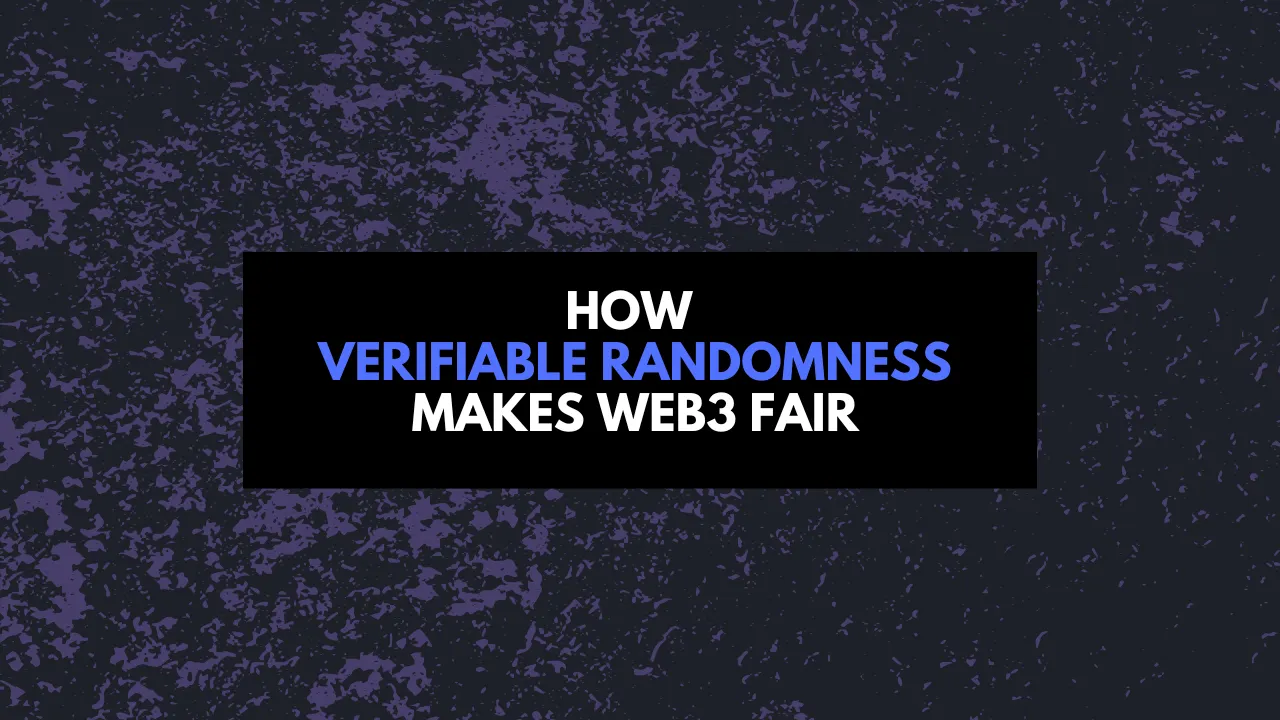
The need for randomness has been a constant throughout human history,
from casting lots in ancient times to using mechanical tools like dice
and lottery drums. While early methods were adequate for their time,
they lacked an assurance of fairness and resistance to manipulation,
often leading to disputes and significant mistrust in critical
scenarios.
The Rise of Random Number Generation
As technology advanced, random number generation evolved from
mechanical to digital. The rise of computational randomness offered
much greater speed and scale, but challenges such as centralization,
predictability, and manipulation still remained. Many methods depended
on centralized systems, including proprietary algorithms or physical
randomizers, which lacked transparency and were vulnerable to
exploitation.
Web3 has introduced the potential for decentralized randomness.
However, even on-chain solutions like block hashes remained vulnerable
to miner manipulation. This has driven builders to focus on the urgent
need for a comprehensive and transparent method of generating
randomness capable of overcoming these limitations.
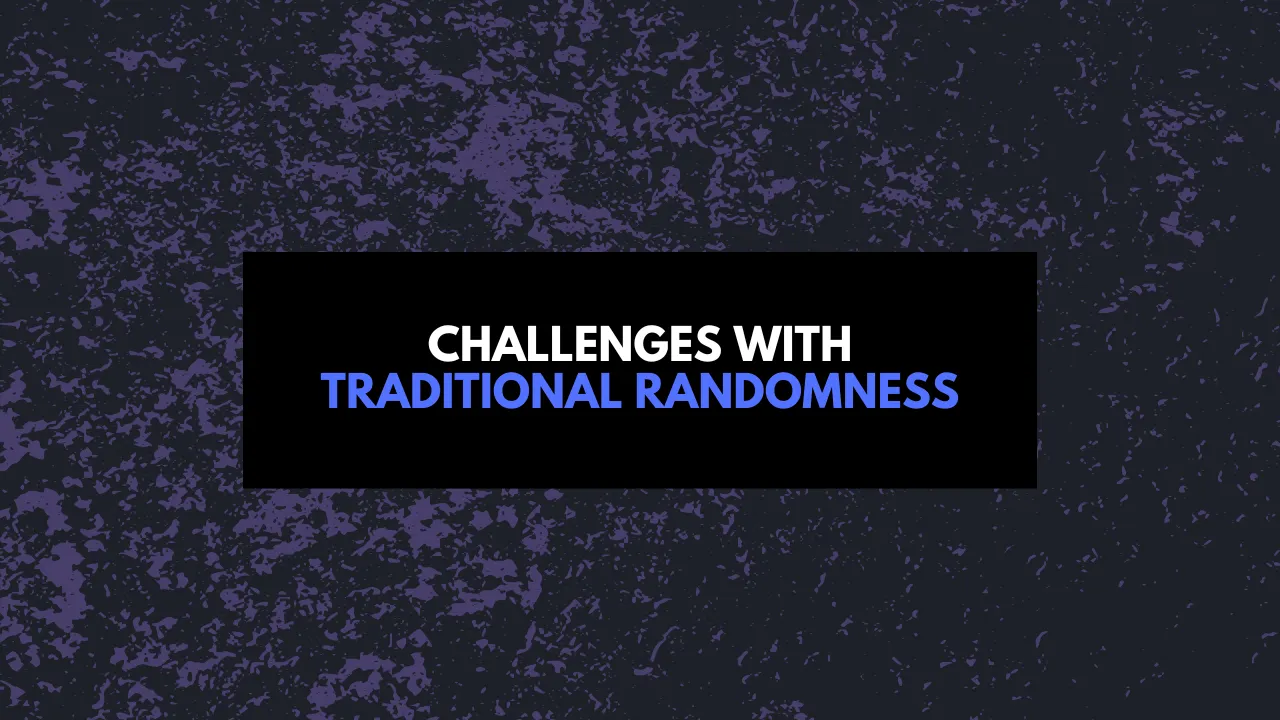
Centralization
Centralized systems for random number generation concentrate control
within a single entity, leaving them vulnerable to bias, corruption,
or manipulation. Lotteries, for example, are managed by centralized
authorities that often face trust issues, as participants lack the
ability to independently verify the fairness of the draws.
Lack of Verifiability
Traditional systems rarely offer mechanisms for participants to verify
the fairness of the randomization process. This lack of transparency
forces users to rely on human trust, which can easily be undermined in
high-stakes scenarios such as gaming or DeFi.
Predictability
Many traditional methods fail to produce truly random outputs.
Predictable systems can be exploited by malicious actors who
reverse-engineer patterns or manipulate inputs, compromising fairness
in applications such as lotteries.
Manipulation
Methods like blockchain block hashes are vulnerable to tampering. For
example, miners can selectively include or exclude transactions to
manipulate the resulting randomness, undermining decentralized trust
entirely.
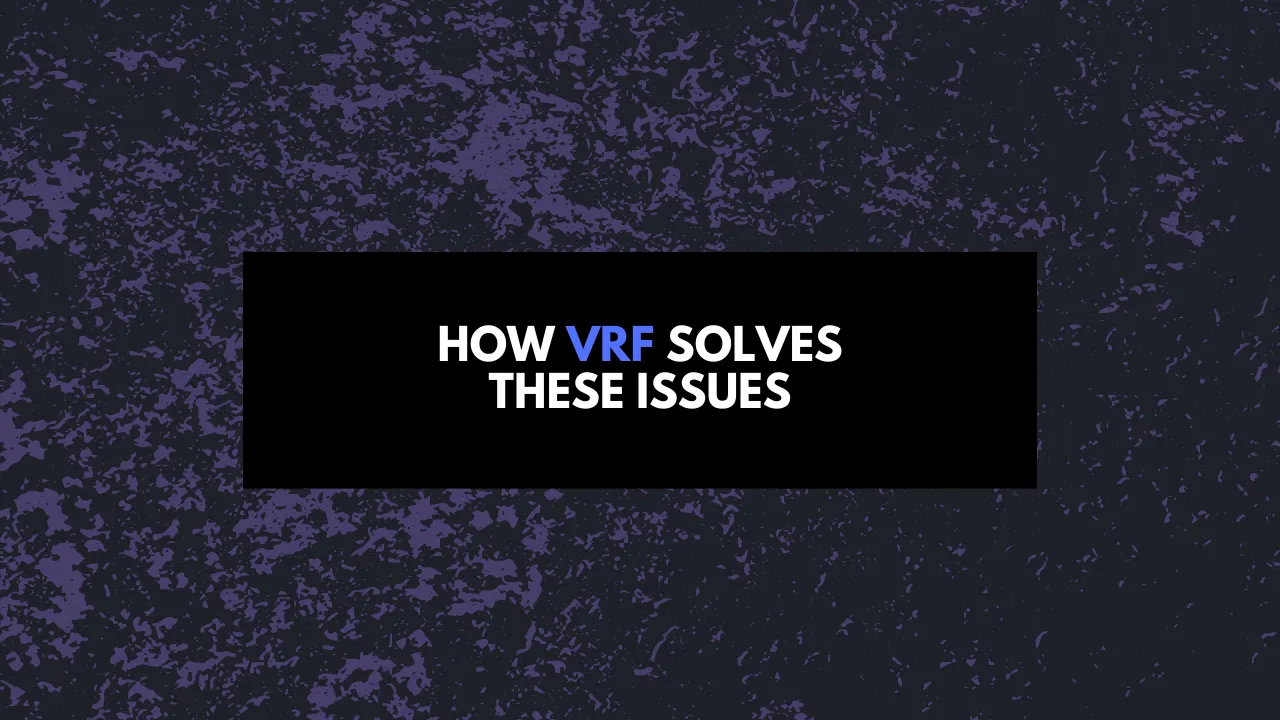
Randomness is a fundamental aspect of Web3, providing fairness,
transparency, and trust for decentralized applications. It supports
processes that rely on randomness, guaranteeing they are provably fair
and immune to interference.
What is Chainlink VRF?
Chainlink VRF is a Web3-native solution for generating secure,
transparent, and manipulation-resistant randomness. It combines
unpredictable blockchain data with cryptographic techniques to produce
random numbers alongside cryptographic proofs, which are verified
on-chain. This approach maintains true fairness and transparency while
removing the need for trust assumptions.
Generating randomness through a decentralized network of independent
oracles, it eliminates single points of control or opportunities for
manipulation. Each random output is paired with a cryptographic proof,
verified on-chain, to remain tamper-resistant, unpredictable, and
transparent, even in adversarial conditions.
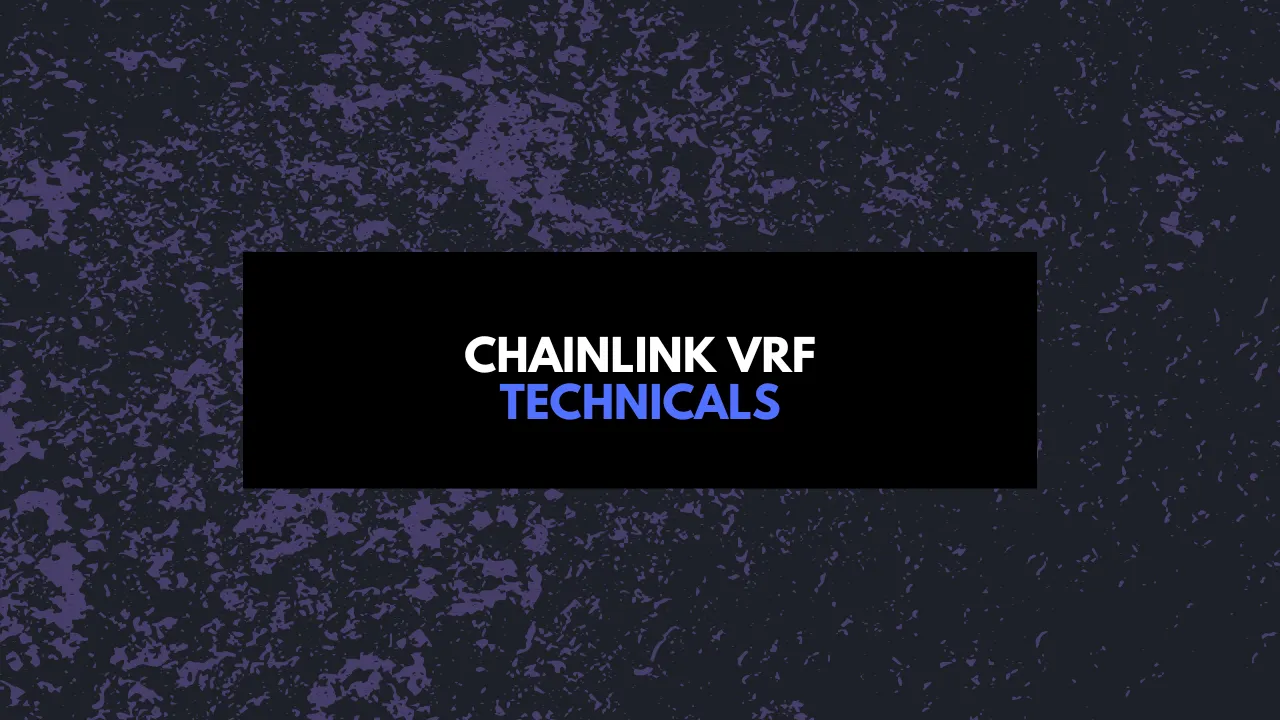
Requesting Randomness
When a smart contract requires a random number, it submits a request
to Chainlink VRF. This request includes parameters such as a seed and
any user-specified data that contribute to the random number
generation process. These inputs are combined with other unpredictable
factors during computation, producing an output uniquely tailored to
the request.
Generating Randomness
The Chainlink VRF oracle processes the request by combining the
provided seed with unpredictable data, such as the block hash,
available only after the request. It then uses its pre-committed
private key to generate both a random number and a cryptographic
proof. This proof verifies that the randomness is tamper-resistant and
directly tied to the inputs, providing a transparent and reliable
result.
On-Chain Verification
Once the random number is generated, the Chainlink VRF oracle sends it
to the requesting smart contract alongside the cryptographic proof.
The smart contract verifies the proof on-chain to confirm the
authenticity of the random number. If the proof is valid, the number
is accepted and integrated into the contract’s logic. This enables
provably fair and tamper-proof applications.
Tamper-Proof
The cryptographic proof guarantees that the generated number cannot be
manipulated by the oracle or any external party. Every step of the
process remains transparent and verifiable on-chain, providing users
and developers with confidence in the fairness and security of the
randomness used in Web3 applications.
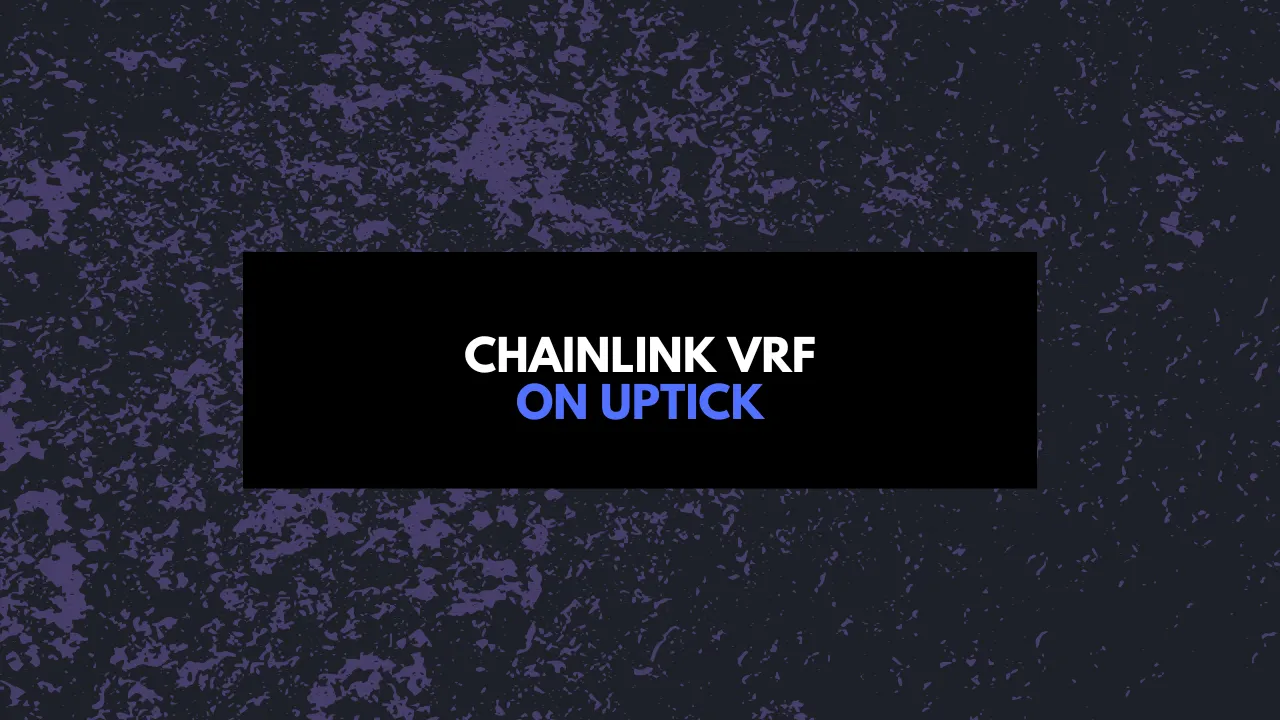
In the Uptick Ecosystem, this functionality has already been
integrated to support decentralized operations with reliable
randomization. Leveraging Chainlink VRF, Uptick delivers verifiable
outcomes that build genuine trust among participants and developers.
Chainlink VRF uses block data unknown at the time of the request and
the oracle node’s pre-committed private key to generate a random
number along with a cryptographic proof. Uptick’s smart contracts
validate and accept the random number only after verifying the
cryptographic proof, ensuring the VRF process is tamper-resistant.
This approach enables users to independently verify on-chain that
applications within Uptick’s Web3 ecosystem operate with provable
fairness, free from manipulation by the oracle, external entities, or
the Uptick team.
Uptick Lucky Draw
From the early adoption of Chainlink VRF, Uptick has embraced
gamification to increase user engagement across the ecosystem.
Verifiable randomness enabled fair and transparent mechanics,
including randomized rewards and limited-time draws, enhancing user
trust and driving platform activity.
Uptick Lucky Draw introduced a lottery-style feature to the Uptick
Marketplace, utilizing Chainlink’s Verifiable Random Function (VRF) to
deliver tamper-proof and provably fair outcomes. This gave
participants confidence in the fairness of the process, further
strengthening the marketplace’s credibility.
How It Worked

Each week, users entered the lottery by purchasing qualifying NFTs,
which served as entries into the prize pool. Draws were conducted
directly on the marketplace, with prizes funded through a share of
platform revenues. As activity increased, the prize pool grew,
offering progressively larger rewards.
Results
At the end of each draw, winners were automatically and randomly
selected, with prizes sent directly to their wallets. Uptick Lucky
Draw demonstrated the transformative potential of verifiable
randomness in building trust and driving engagement, paving the way
for broader applications across the ecosystem.
This feature significantly increased platform activity and highlighted
the potential of verifiable randomness in enabling fair, trust-driven
interactions. The transparency of the process encouraged broader
participation and strengthened the platform’s credibility.
Decentralized randomness extends far beyond a marketplace lottery
though, with this serving as just a test case. The technology unlocks
a wave of innovative applications that rely on this level of
randomness. Combined with Uptick’s modular infrastructure, it becomes
a key component in building a truly decentralized Web3 ecosystem.
Future Possibilities
While the marketplace showcases VRF’s potential, its applications can
expand to areas such as:
RWA Prize Pools
Tokenized real world assets, such as fractional property shares or
high value collectibles, could form prize pools. VRF could randomly
select participants for perks like VIP privileges, fractional
ownership, or exclusive benefits upon completing tasks such as staking
or asset purchases.
Social
Non-profit organizations could use VRF to fairly distribute donations
or aid packages, guaranteeing that resources are allocated without
bias. This approach enhances transparency and broadens recipient
reach, strengthening trust in charitable efforts.
Tokenized Collectibles
Integrating virtual trading cards or in-game assets into decentralized
applications unlocks additional possibilities. With VRF, platforms
could randomly distribute rare or exclusive items to participants who
meet eligibility criteria, such as completing ecosystem challenges,
holding specific tokens, or participating in events.
Educational Grants and Scholarships
Institutions or decentralized platforms can use verifiable randomness
to fairly allocate grants, scholarships, or other resources, providing
every participant with an equal opportunity based on predefined
eligibility criteria.
Each of these use cases demonstrates how VRF can bring fairness,
unpredictability, and transparency to a wide range of Web3 activities,
extending its application far beyond the marketplace.
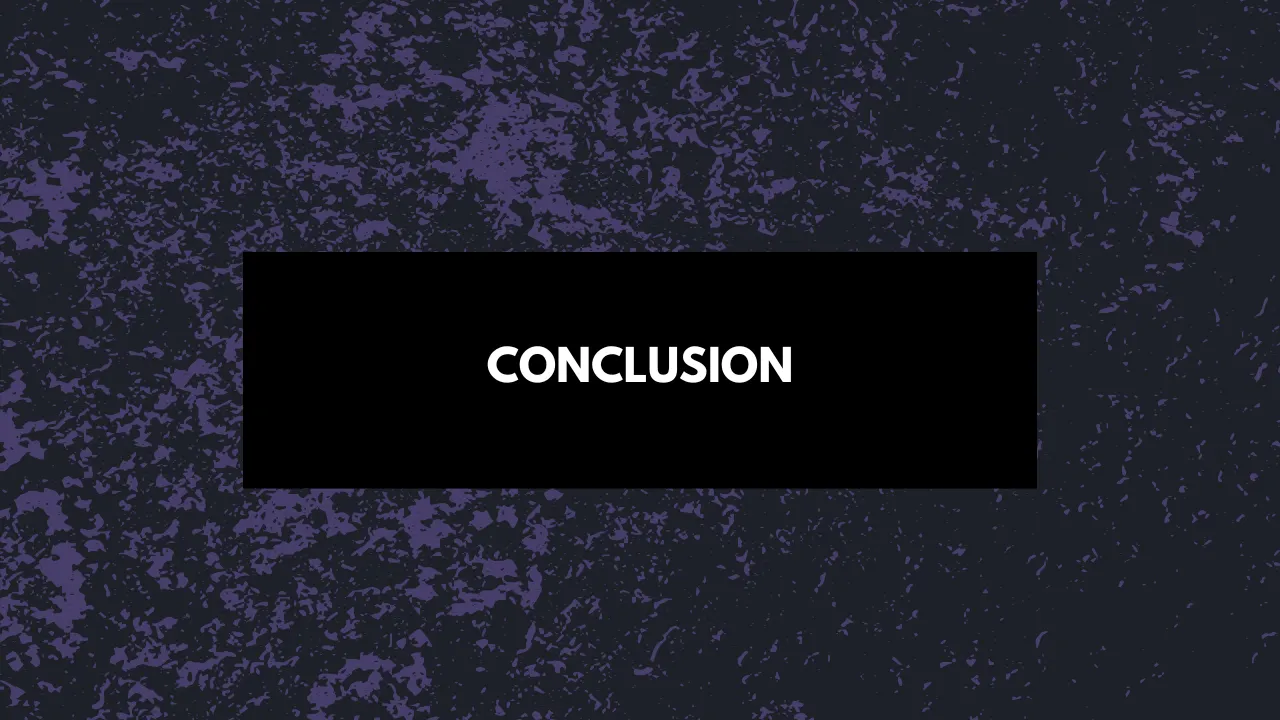
Chainlink VRF provides the Web3 world with a provably fair and
tamper-resistant model for randomness, making it essential for
applications that value integrity and transparency. Combining on-chain
block data with off-chain oracle computations, VRF generates
randomness and cryptographic proofs that protect outcomes from
manipulation, including oracle operators or developers.
Within the Uptick Ecosystem, Chainlink VRF supports unbiased processes
and shields randomness from external influence. Its transparent,
verifiable approach strengthens user trust and delivers authentic,
manipulation-free outcomes. As Uptick expands its Web3 ecosystem,
verifiable randomness will remain essential, enhancing user
experiences and enabling new opportunities across its business-focused
applications.








